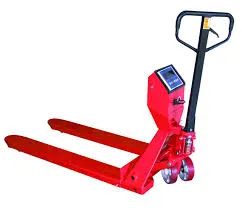Choosing the right fall arrest device is crucial for ensuring workplace safety, particularly in industries like construction, telecommunications, and warehousing where the risk of falls from height is significant. As regulations and technology continue to evolve, it's more important than ever to understand the intricacies of these devices to make informed purchasing and usage decisions.

Fall arrest devices are critical components of personal fall arrest systems (PFAS), designed to minimize the impact of falls by safely stopping a person from hitting the ground or other obstacles. The key elements of an effective fall arrest system encompass a full-body harness, a connecting device, and a reliable anchor point. The fall arrest devices, often referred to as lifelines or lanyards, are the connecting points that join the harness to the anchor.
Understanding the various types of fall arrest devices is paramount. Self-retracting lifelines (SRLs), for instance, provide greater mobility and ease of use by allowing a certain length of lifeline to extend and retract as the user moves. This type of device halts the fall within a short distance, thereby reducing fall arrest forces. Rope grabs, on the other hand, are part of vertical lifeline systems that lock onto the rope when a fall occurs, offering a firm stop. Every type has its specific use-case scenarios dependent on work environment, necessary mobility, and fall distance.

A significant aspect of fall arrest devices is their compliance with safety standards. Reputable devices meet or exceed the requirements set by standards such as OSHA and ANSI in the United States or equivalent regulations abroad. These standards dictate the performance specifications, marking and labeling requisites, and safety requirements the devices must satisfy. When purchasing a device, ensuring compliance not only guarantees safety but also aligns with legal obligations, mitigating potential liabilities in case of accidents.
Experience in the field highlights the importance of user training and proper maintenance of these devices. Users must receive sufficient training to correctly wear the harness, attach the device to an anchor point, and operate the fall arrest device efficiently. Many incidents occur due to improper usage or negligence in maintenance routines. Regular inspections are vital; before each use, checking for wear and tear, corrosion, or other damage is essential. Documented periodic inspections must conform to the manufacturer’s guidelines to ensure longevity and reliability of the equipment.
fall arrest device
Expertise in selecting a fall arrest device requires insight into the specific needs of the work environment.
Factors such as fall clearance, obstructions, user mobility, and environmental conditions (e.g., presence of water, dust, or chemicals) must influence the choice. Consulting with occupational safety specialists can leverage their expertise to select a device tailored to the particular context and hazards presented.
Authoritativeness of a fall arrest device is often reflected through endorsements and certifications from recognized safety organizations. Devices that are awarded safety seals or certificates of excellence from authoritative bodies have undergone rigorous testing, confirming their capability to protect users under defined conditions.
Trustworthiness can further be established by consulting user reviews, testimonials from industry experts, and conducting field tests under controlled conditions. Manufacturers who actively research and innovate based on user feedback tend to produce more reliable devices. A dependable fall arrest device must not only be robust and compliant but also user-friendly and adaptable to diverse working conditions.
As sheer reliance on equipment doesn't wholly eliminate risk, a holistic approach towards fall protection is to be adopted, integrating proper planning, equipment selection, user training, and a culture of safety. Decision-makers must prioritize investing in high-quality fall arrest devices, supported by adequate systems and practices, ensuring both regulatory compliance and the paramount safety of workers.








